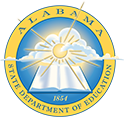James Reese Europe was an "accomplished orchestra conductor, bandleader, and composer of popular songs, marches and dance music during the early twentieth century...Europe was an effective champion of African-American musical performers and composers and helped to gain acceptance for them in the United States and abroad." Born in Mobile, Alabama, Europe accomplished much in his brief lifetime and deserves a place in every study of World War I.
Students will annotate a biography of James Reese Europe and analyze two photographs of the orchestra Reese led across France. Students will view a documentary film of Europe and his "Hellfighter" orchestra as they fought, performed, and received medals for their efforts during the war.
As a culminating activity on the second day, students will write a eulogy for Europe detailing his role as a leader in Jazz and as an African American officer.
This lesson was created in partnership with the Alabama Department of Archives and History.
